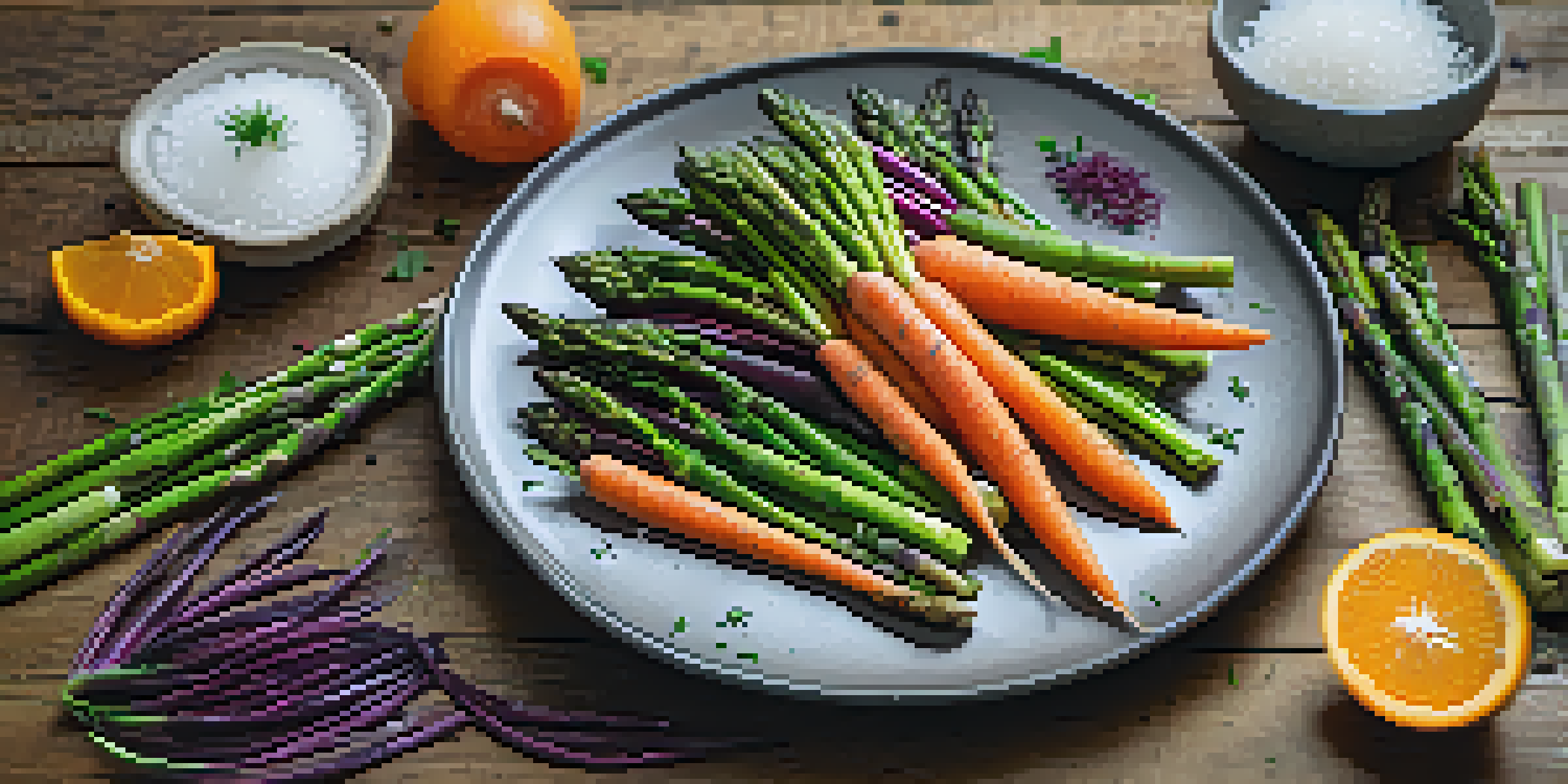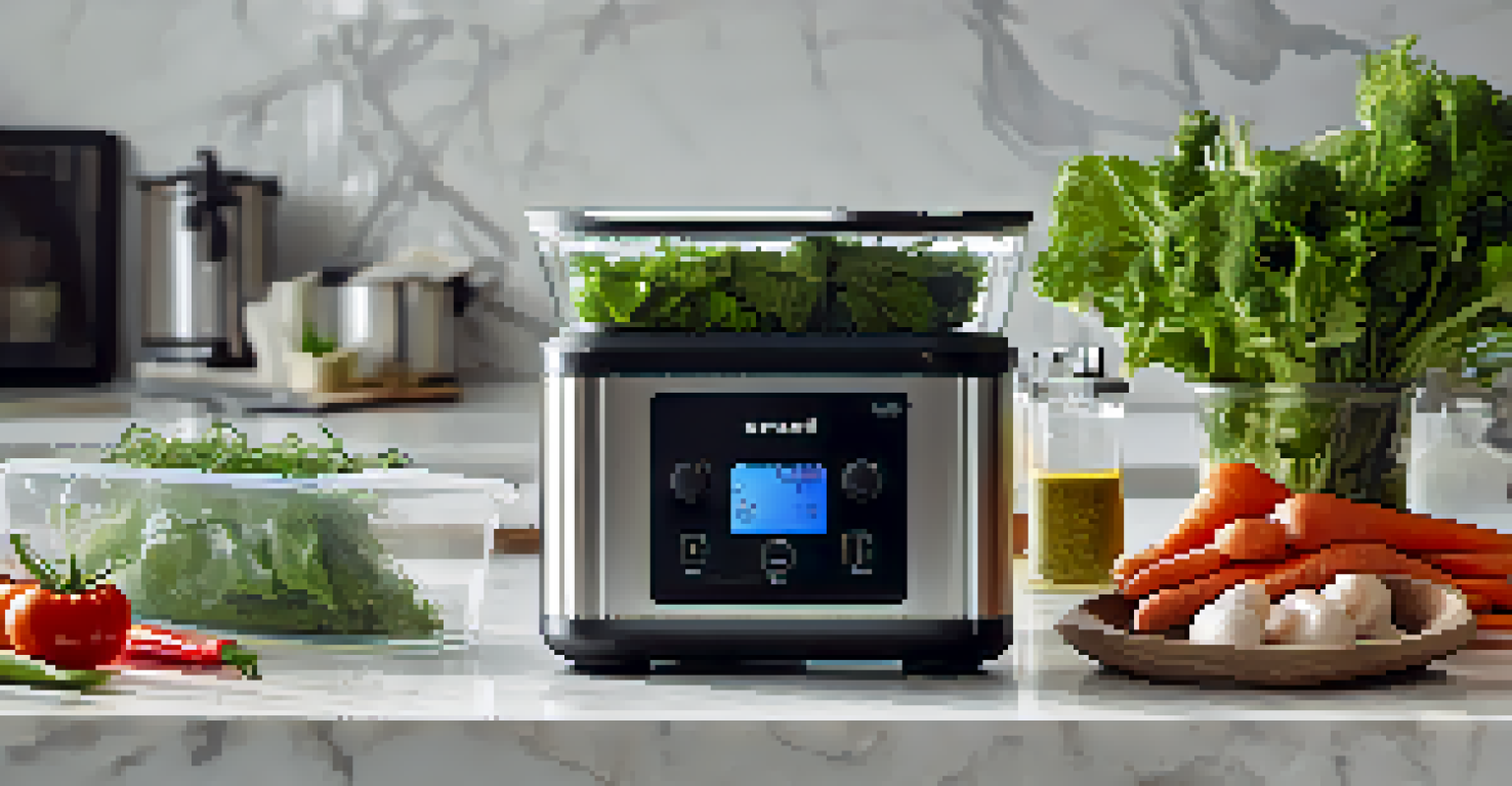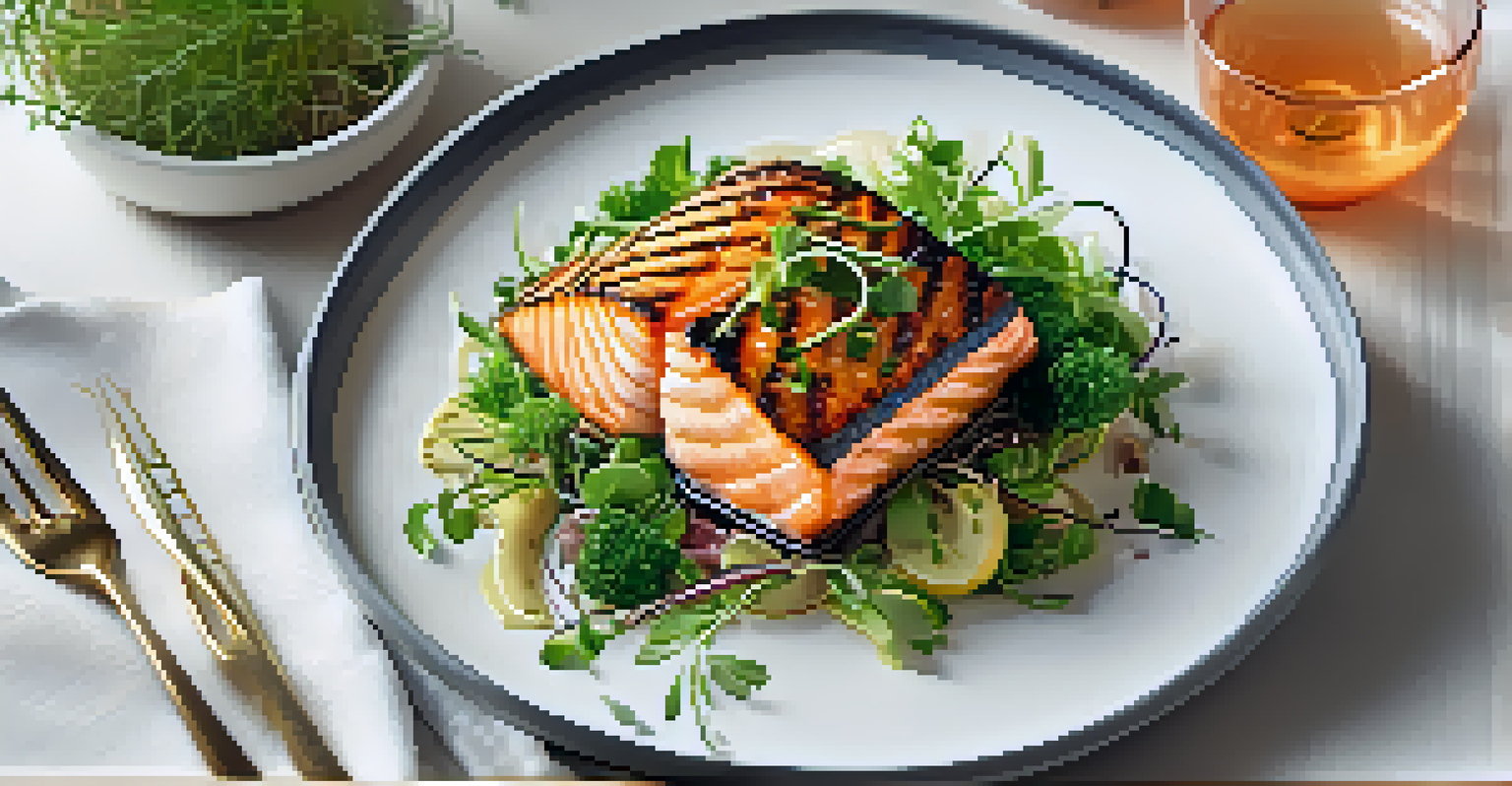Gourmet Sous Vide Vegetables: Techniques for Perfect Results

Understanding the Sous Vide Cooking Method
Sous vide, which means 'under vacuum' in French, is a cooking technique that involves sealing food in a plastic bag and immersing it in a water bath at a precise temperature. This method allows for even cooking, ensuring that vegetables maintain their flavor and nutrients. The beauty of sous vide is that it removes the guesswork, resulting in perfectly cooked vegetables every time.
Sous vide cooking is like a time machine for flavors. It allows you to slow down time and give your ingredients the chance to shine in a way that traditional methods simply can't.
The controlled temperature means that you can achieve the ideal texture without the risk of overcooking. For instance, carrots cooked sous vide will retain their crispness and natural sweetness, unlike those boiled or steamed. This level of precision is what sets sous vide apart from other cooking methods, making it a favorite among chefs and home cooks alike.
As you dive into sous vide cooking, remember that the key is patience and attention to detail. With this method, the rewards are plentiful, as you’ll discover vibrant flavors and textures that are often lost in traditional cooking methods.
Choosing the Right Vegetables for Sous Vide
Not all vegetables are created equal when it comes to sous vide cooking. Dense vegetables like carrots, potatoes, and beets hold up well to this method and can benefit significantly from the low and slow cooking process. On the other hand, delicate vegetables such as spinach or zucchini may require shorter cooking times to prevent them from becoming mushy.

It's also essential to consider how you want to use these vegetables in your dishes. For instance, if you're looking to create a vibrant salad, you might opt for slightly undercooked asparagus to keep its crunch. Alternatively, if you're making a puree, cooking your vegetables until they're very tender will yield the best results.
Sous Vide Ensures Perfect Cooking
The sous vide method offers precise temperature control, resulting in evenly cooked vegetables that retain their flavor and nutrients.
Experimenting with different vegetables will not only enhance your culinary skills but also allow you to discover exciting flavor combinations. So, don’t hesitate to try out various options to see which ones you enjoy most in your recipes.
Essential Equipment for Sous Vide Cooking
To get started with sous vide cooking, you'll need a few essential tools. The most critical piece of equipment is a sous vide immersion circulator, which heats and circulates the water for even cooking. Brands like Anova and Joule offer reliable options, and their user-friendly designs make them accessible to both beginners and experienced cooks.
Great cooking is about being inspired by the simple things around you—ingredients, music, and the people you love.
In addition to the circulator, you'll also need vacuum-seal bags or freezer-safe zip-top bags. Vacuum-sealing is ideal for maximum flavor infusion, but if you don't have a vacuum sealer, the water displacement method with zip bags will work just fine. Just make sure to remove as much air as possible to avoid floating during cooking.
Lastly, a large pot or container to hold the water bath is necessary. It should be deep enough to accommodate the circulator and allow for adequate water circulation. With these tools in place, you're well on your way to mastering gourmet sous vide vegetables.
Preparing Vegetables for Sous Vide Cooking
Preparation is key when it comes to sous vide cooking. Start by washing and peeling your vegetables as needed, then cut them into uniform sizes for even cooking. For example, halving baby potatoes will ensure they cook through at the same rate as larger pieces, resulting in a harmonious texture.
Next, season your vegetables generously with salt, pepper, and any additional herbs or spices you prefer. This is where you can get creative—think garlic, rosemary, or even a splash of lemon juice for a fresh twist. The flavors will concentrate during cooking, so don’t be shy with the seasoning.
Choose Vegetables Wisely
Not all vegetables are suited for sous vide; dense varieties like carrots and potatoes thrive, while delicate ones require careful timing.
Once prepared, place the vegetables in your vacuum-seal or zip-top bags. If using the vacuum method, seal tightly to remove air; for the water displacement method, slowly submerge the bag in water to push out air before sealing. This preparation process sets the stage for delicious results.
Setting the Right Temperature and Time
Temperature and time are the heart of sous vide cooking. Each vegetable has a unique optimal temperature and cooking time that will bring out its best flavor and texture. For instance, carrots are best cooked at 183°F (84°C) for about 1 to 1.5 hours, while broccoli shines at 185°F (85°C) for about 30 to 45 minutes.
Using a sous vide cooking guide or app can help you determine the perfect settings for various vegetables. These resources often provide invaluable tips tailored to different types of produce, ensuring you achieve consistent results. Keep in mind that cooking times can be adjusted based on how tender you want them to be.
After you’ve set the temperature and timer, it's time to relax! Unlike conventional cooking, you won't need to hover over the stove. The sous vide method allows you to focus on other aspects of your meal, making it a stress-free cooking experience.
Finishing Techniques for Sous Vide Vegetables
Once your vegetables are cooked to perfection, you might be wondering how to take them to the next level. A quick sear in a hot skillet or a blast in the broiler can add a delightful caramelized finish. This technique not only enhances the flavor but also gives your vegetables an appealing texture and a beautiful golden color.
For instance, after sous vide cooking asparagus, a minute in a blazing hot pan with a bit of olive oil can create a lovely char that elevates its taste. You can even sprinkle some flaky sea salt on top for that gourmet touch. This final step is where you can really showcase your creativity and make the dish visually stunning.
Finishing Techniques Enhance Flavor
A quick sear or broil after sous vide cooking can elevate vegetables' taste and texture, adding a gourmet touch to your dishes.
Remember, the goal is to complement the sous vide cooking process without overpowering the natural flavors of the vegetables. A little goes a long way, so keep your finishing techniques simple yet effective.
Serving Suggestions for Sous Vide Vegetables
When it comes to serving sous vide vegetables, the options are limitless! You can toss them into salads, mix them with grains for a hearty bowl, or serve them as a side dish drizzled with a sauce. Their vibrant colors and flavors are sure to impress your guests.
Consider pairing your sous vide vegetables with complementary proteins, such as grilled chicken or fish. For example, sous vide carrots can be a delightful side to a perfectly grilled salmon, creating a meal that’s not only delicious but also visually appealing. Don’t shy away from garnishing with fresh herbs or a squeeze of citrus to brighten the dish.

Lastly, think about how you can incorporate these vegetables into your weekly meal prep. Preparing a batch of sous vide vegetables can make healthy eating easy and convenient throughout the week. Just store them in the fridge, and you’ll have flavorful options ready to go at any time!